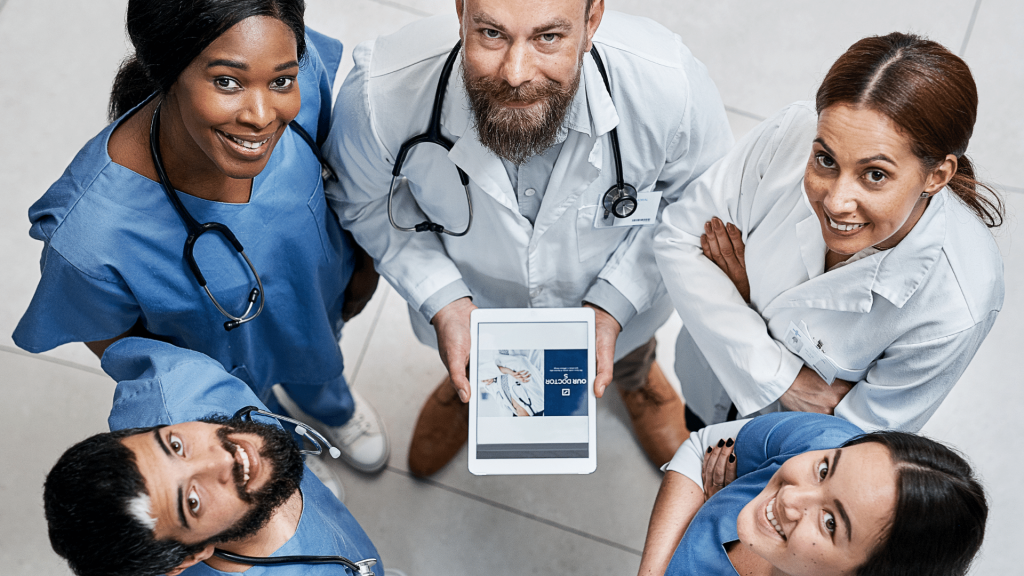Physicians and other medical professionals have always been at the forefront of using technology to improve the healthcare experience of their patients. Thanks to tech innovations, healthcare providers can now use mobile devices and apps to enhance patient care.
For example, electronic medical record (EMR) systems allow doctors to track a patient’s health history, past consultations, and prescribed medications. Nurses can use hospital information systems (HIS) to order supplies and view real-time updates on a patient’s status. Meanwhile, patients can manage their own health records, find healthcare providers, and schedule appointments online.
This article will further explore the significance of technology and how it has contributed to the overall enhancement of the patient experience.
Table of Contents
- Convenient Access to Medical Records
- Improved Communication and Collaboration
- Easier Access to Healthcare
- Personalized Treatment and Diagnoses
- Less Paper Waste
- Secure Handling of Patient Data
- Greater Efficiency
Here are some of the ways that technology has made healthcare so much better for patients, medical professionals, and hospital staff:

1. Convenient Access to Medical Records
In the past, patients would have to request printed copies of their medical records from a doctor or hospital. It could take days or weeks before the information becomes available. Patients would then need to either pick up the documents, ask for a faxed copy, or pay for a courier.
But thanks to EHR systems that show the digital version of health charts, patients can now view them online 24/7. This allows them to keep track of their physical status without having to go to a hospital or clinic.
If an applicant needs to present medical records for a new job, they can easily access the data online. This convenience is also crucial during emergencies, as first responders and ER staff can quickly see a patient’s history using technology.
2. Improved Communication and Collaboration
Communication is much faster and more efficient, thanks to email, text messaging, and video chat. Aside from treatments, these tools make it easier to ask questions, get advice, and schedule appointments.
Right now, they can even book appointments and talk to their care provider remotely. In case there’s a need to talk to another specialist, the patient can speak to both of them in real time.
For example, an expectant mother can have a quick consultation with her OB/GYN and doula at the same time as they prepare for her birth plan. Not only does she save time from traveling from her home to the hospital, but she also saves money on the doula’s hourly rate and transportation costs.
Previously, patients could only contact a doctor by either going to the clinic or making a phone call. In most cases, they were not even sure if their primary physician would be available for a consultation.
Meanwhile, when it comes to a doctor’s experience, tech makes it easier to have peer consultations with other specialists for complex cases. Medical professionals in the field can communicate what they need with hospital staff via chat or video calls. Also, physicians no longer have to deal with mountains of paperwork, thanks to the widespread use of digital records and tools.
3. Easier Access to Healthcare
Telemedicine is the provision of healthcare services using technology such as video conferencing, online chat, and phone calls. It allows patients in isolated areas to consult with healthcare professionals without having to travel to a clinic or hospital.
Studies have shown that telemedicine can help fine-tune patient outcomes, including reducing emergency room visits and hospitalizations. It can also help to widen the access to care, particularly for rural and underserved populations. To use telemedicine, patients typically need to set up an account with a provider such as a doctor or a nurse.
More importantly, online forms can help to reduce the risk of errors. When paper forms are used, there is always the potential for mistakes when transcribing or transferring information from one format to another. By using online forms, this step can be eliminated as doctors, nurses, or patients can enter data directly into the system.
In addition, online forms can help to save time. Rather than having to fill out paper forms by hand, care providers can simply complete them electronically.

4. Personalized Treatment and Diagnoses
Technology allows doctors to provide accurate diagnoses and better treatment for both physical and mental health conditions. Since they have access to more information than ever before, they can come up with more personalized treatment plans. When it comes to treating patients, that can make all the difference.
Take allergies, for example. Previously, if a patient had allergy symptoms, the doctor would have to guess what triggered the reaction. But now, doctors can skip the guesswork and quickly pull up a patient’s online medical records. That way, they can be sure to prescribe the right medication and avoid potential complications.
Technology is also helping to bring about the age of personalized medicine. Through genomics and other technologies like artificial intelligence, providers can now tailor treatments to each patient’s unique genetic makeup. This approach to medicine holds great promise for increasing the effectiveness of treatments and reducing side effects.
For example, researchers are using data from genetic tests to identify unique patterns in an individual’s DNA. This information can then be used to develop targeted treatments more likely to be effective for that individual.
5. Less Paper Waste
One of the most environmentally friendly ways technology has enriched the healthcare experience is by reducing paper waste. In the past, hospitals and clinics printed everything from patient charts to prescription forms.
But now, healthcare professionals use electronic health records and e-prescribing, which has dramatically reduced paper waste. The use of online forms and esignature platforms also made it possible for doctors and patients to fill out and sign documents online.
6. Secure Handling of Patient Data
Managing patient data has never been a simple task for healthcare organizations. In the past, this involved manual encoding, which was time-consuming and often led to errors. At the same time, maintaining the security and privacy of medical records is also a priority.
Digital forms and esignatures allow hospitals to do all of these tasks more efficiently. These tools ensure that confidential information is kept secure and private. They usually include data encryption, which is essential when sharing and processing medical records online. Along with other security measures, they help to protect information from being accessed by unauthorized individuals.
By using these tools, healthcare organizations can keep timely and accurate records while ensuring compliance with government regulations like HIPAA.
7. Greater Efficiency
Technology has also helped to make the healthcare system more efficient overall. By automating repetitive tasks such as appointments and prescriptions, technology frees up time for both providers and office staff members. This allows medical personnel to give the best possible care to their patients.
It also reduces the stress of administrative work as tasks can now be done in seconds with the right software or app. Additionally, technology can help reduce encoding errors that may have a negative impact on patient care. It also provides reminders and alerts via mobile devices, ensuring that medical paperwork gets completed on time.
Final Thoughts
We hope that these examples have given you a fresh perspective on how healthcare can be transformed into a more positive experience for patients and physicians alike.
Online forms and e-signature software are two examples of how technology has made it easier for patients to receive medical care.
Patients can now complete paperwork while using their smartphones from the comfort of their homes. Meanwhile, providers can easily streamline all records in a secured platform for efficient file management.
Try the Fill esignature app and be amazed at how convenient it is to sign medical documents, fill out patient forms, and even store data in the cloud.




